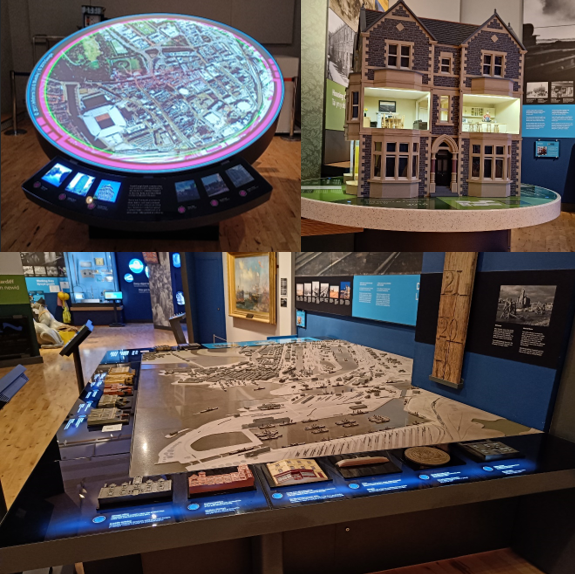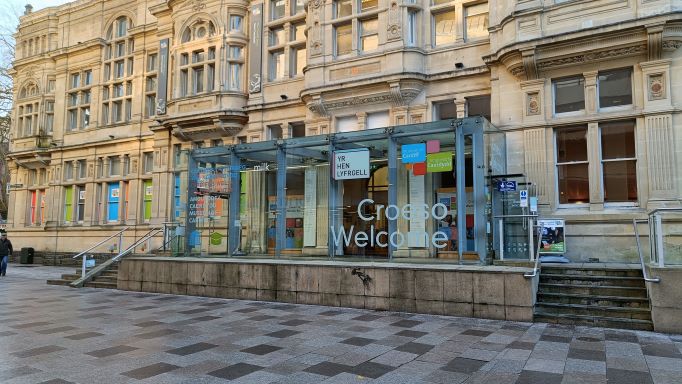The Museum of Cardiff may become a pop-up experience rather than a fixed site
THE long-term effects of Cardiff Council’s proposal to move the Museum of Cardiff out of the Old Library building in The Hayes have been criticised by a Professor of Conservation.
The move is a response to the £23.5m budget shortfall that Cardiff Council is facing for the financial year ahead – 2023/24.
To help fill this funding gap, they are planning to shift the Museum of Cardiff away from its current permanent home in The Hayes and instead make it a pop-up attraction that travels around the city.
The Council’s argument is that this will save them £266,000 a year and, if they are able to find the money and a suitable venue, they could then re-open it permanently in the future.
However, there are serious concerns about the feasibility of this plan. Jane Henderson, a Professor of Conservation at Cardiff University, is worried that the harm done to the museum’s finances will force the Council to close it completely.
“My main concern is that I cannot find an example of a pop-up museum working successfully,” said Prof Henderson.
“While big places like the National Museum can send exhibits out, they wouldn’t work without the central venue.
“It just seems like an incredibly ill-considered way to fill 1% of the (Council’s budget) gap.
“I also think it’s disrespectful to funders. If the museum wants grant money in the future, are donors going to consider a place that has been kicked out of its permanent venue after just 10 years?”

The Museum of Cardiff must meet certain conditions in order to qualify for Museum Accreditation status – provided by a UK partnership scheme run by the Welsh Government Culture Division. These conditions include being a “permanent entity with a long-term purpose” and minimum levels of public access to exhibits. The Council’s plans threaten the museum’s ability to meet these benchmarks and, in turn, raise money from charitable grants – which often require accreditation status.
Concerns about the museum’s status were compounded earlier this month when the Deputy Minister for Arts and Sport, Dawn Bowden MS, told the Senedd: “Officials are liaising with Museum of Cardiff staff and have already given some feedback on the likely impact of the proposals on the museum’s accredited status … I hope a solution is found where the Museum is able to maintain its accreditation status.”
The current proposals appear to harm the museum’s finances by reducing funding from the Council, while also making it significantly harder to qualify for funding from elsewhere.
However, even if this weren’t the case, there are also concerns about the value lost to the city by taking the public’s main gateway to Cardiff’s history out of its current central location.
Adam Johannes from Cardiff People’s Assembly – a city-wide group who campaign against austerity, cuts and privatisation – said: “Museums are magical places where time is transformed into space. To deny citizens access to the story of Cardiff is like cutting the roots from a tree. Museums like the Museum of Cardiff are essential because they give us a story of our city that centres on the lives of everyday people.”
That sentiment was echoed by Prof Henderson: “Without museums, we’d have nowhere to learn the lessons of our past. The exhibits tell ordinary stories about ordinary people. I cannot understand how we could be a capital city without a museum that tells our story.”
Gareth Brown, Chair of the Roath Local History Society, added: “I can’t see how it’s practical, people won’t know where it is. A museum should be at the heart of a city, and I really think that the Council is missing a trick by taking it out of a building that has had such historical significance.”
While the Council’s plans involve making the museum’s collections a remote attraction, it’s unclear what will happen to the rest of its features. Favourites like the Cathedral Road house, the Cardiff through-the-years panel and the interactive map of the docks are all unlikely to be part of any mobile exhibit.

The basement of the museum also hosts a children’s play space and rotating community displays that would be difficult to establish in a temporary venue.
Additionally, the building is frequently used by a large number of people with disabilities, there are concerns that short-term facilities would simultaneously be harder for these people to access and lack the provisions that are currently present to help them engage with the exhibits.
The Council is still seeking public input on this decision in their budget consultation survey. It’s available on their website until January 29.



